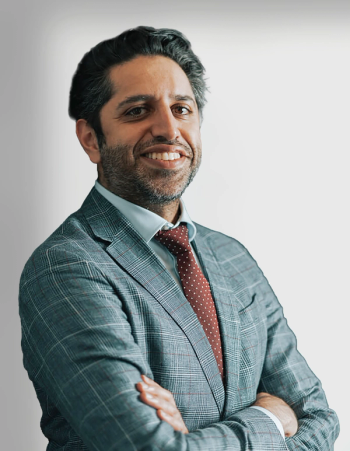
Leveraging the Power of Shared Decision Making in Pediatric Dermatology
Kelly M. Cordoro, MD, shared tips on implementing shared decision making in pediatric dermatology dermatology atat annual conference.
“I want to dedicate this talk to patients,” said Kelly M. Cordoro, MD, in the “Critical Connections: Shared Decision Making in Pediatric Dermatology” session at the 36th Annual Pre-AAD Meeting of the
“At its very base,
Shared decision making has been around for a long time, she told attendees, and it is now recognized as a measure of high quality care. Cordoro added that some reimbursement models recognize the importance of shared decision-making. Ideally, it is used for complex, preference-sensitive decisions when there are several medically reasonable options available. In some areas of medicine (eg, oncology, surgery, cardiology, etc.) shared decision making has been associated with increased patient satisfaction and adherence as well as better outcomes.
With that in mind, Cordoro noted there are a number of dermatological conditions that are well suited for shared decision making, including acne psoriasis, and atopic dermatitis. In these cases, ideal treatment relies on variables including disease characteristics (ie, severity, symptoms, sites, history), patient characteristics (ie age, comorbidity, disease burden), therapeutic options (ie, safety efficacy, duration, adverse events), and general logistic preferences (ie, dose timing, medication delivery, etc).
The (Potentially Complicated) Role of the Caregiver
Shared decision making with pediatric populations are a little more complex, as patients are minors without full autonomy, Cordoro explained. The typical patient-doctor dyad is extended to include the caregiver (often a parent), who may have their own unique perspective and preferences. Included in this new equation may be the challenge of the caregiver balancing a desire to empower their child and foster self-advocacy and independence while their need to protect their child’s health and well-being. Social influences may also play a role, Cordoro said.
“How many times do we see parents who just want to treat because they don’t want their child to get bullied several years down the road,” she said.
Meanwhile, Cordoro said there is a wide spectrum of parental approaches, from those who will not allow their children to speak their mind to those who are ready to hand over full autonomy. “We can help with that,” she told attendees, “because we need to recognize the developmental stage of the patient and help move that autonomy along when its appropriate or shift the weight of the decision back to the surrogate or caregiver when that’s appropriate.”
Good Communication is Key
Knowing when and how to engage patients and their families is also important, she noted. Communication is key, and the discussion may need to happen over several visits. “Our communication skills need to be sharp and up to date and need to consider our patients’ health literacy and the social and structural determinants of health that are going to influence decision making,” Cordoro told attendees. She also addressed issues of cultural humility and competency and the importance of recognizing biases.
“Typically, we know what we want the patient to do, and you know what drug we'd like them to pick and we can really heavily influence that” she said. Understanding those biases and knowing when to influence and when not to do so is important.
There also is no universal agreement on the age at which minors are considered competent to make their own health care decisions. On the one hand, there are times when “you can have a perfectly reasonable discussion with an 8 year old, who is a cooperative patient,” she said. On the other hand, adolescents can be challenging, as their growing desire for autonomy mixes with poor impulse control and impaired executive function due to adolescent brain physiology. In fact, Cordoro noted teens can be easily influenced by social media.
Dermatology Disorders and Decisions
Cordoro pointed to psoriasis as a perfect situation to use shared decision-making: it is a high burden, chronic disease with downstream consequences and moderate evidence with no single best choice for treatment. Similarly, alopecia and vitiligo are preference-sensitive conditions that can work well with shared decision making as long as clinicians understand the twist, she said. With these diseases, there is high psychosocial burden and low medical risk and there are some high and some low risk medications. Risk tolerance impacts treatment decisions, and the visibility of these conditions may skew the decision calculus.
“And this really strains our decision making as physicians, because we take an oath to do no harm,” Cordoro said, referring to medications that may have adverse effects. “Now we’re recognizing the burden, the stigma, and all the impact of these 2 diseases.”
Taking It Step By Step
Cordoro shared her approaches for implementing shared decision making in clinical practice:
1. Share relevant information about the condition and treatment options in a clear and understandable manner. She advised attendees to avoid jargon and to assess understanding via “teach back” techniques.
2. Solicit and understand patient/family perspectives, preferences, and priorities. In doing so, Cordoro reminded clinicians to be mindful of the power asymmetry between clinician and patient. When developmentally appropriate, focus on the child’s interests.
3. Invite the patient and family into a shared decision-making conversation. Cordoro uses phrases like, “There are many reasonable options. Let’s work together to come up with a plan that’s right for you.” At this stage it is also important that all the people involved in the decision are part of the conversation.
4. Check in frequently. See if anything has changed.
“Shared decision making is the cornerstone of patient centered care,” Cordoro concluded. “It is a useful tool when it is unclear what the right balance is between potential side effects of interventions and consequences of undertreatment on overall health and wellbeing.”
Have you implemented shared decision making in your dermatology practice? Share your tips on successfully integrating this or other strategies via email to
Newsletter
Like what you’re reading? Subscribe to Dermatology Times for weekly updates on therapies, innovations, and real-world practice tips.


















